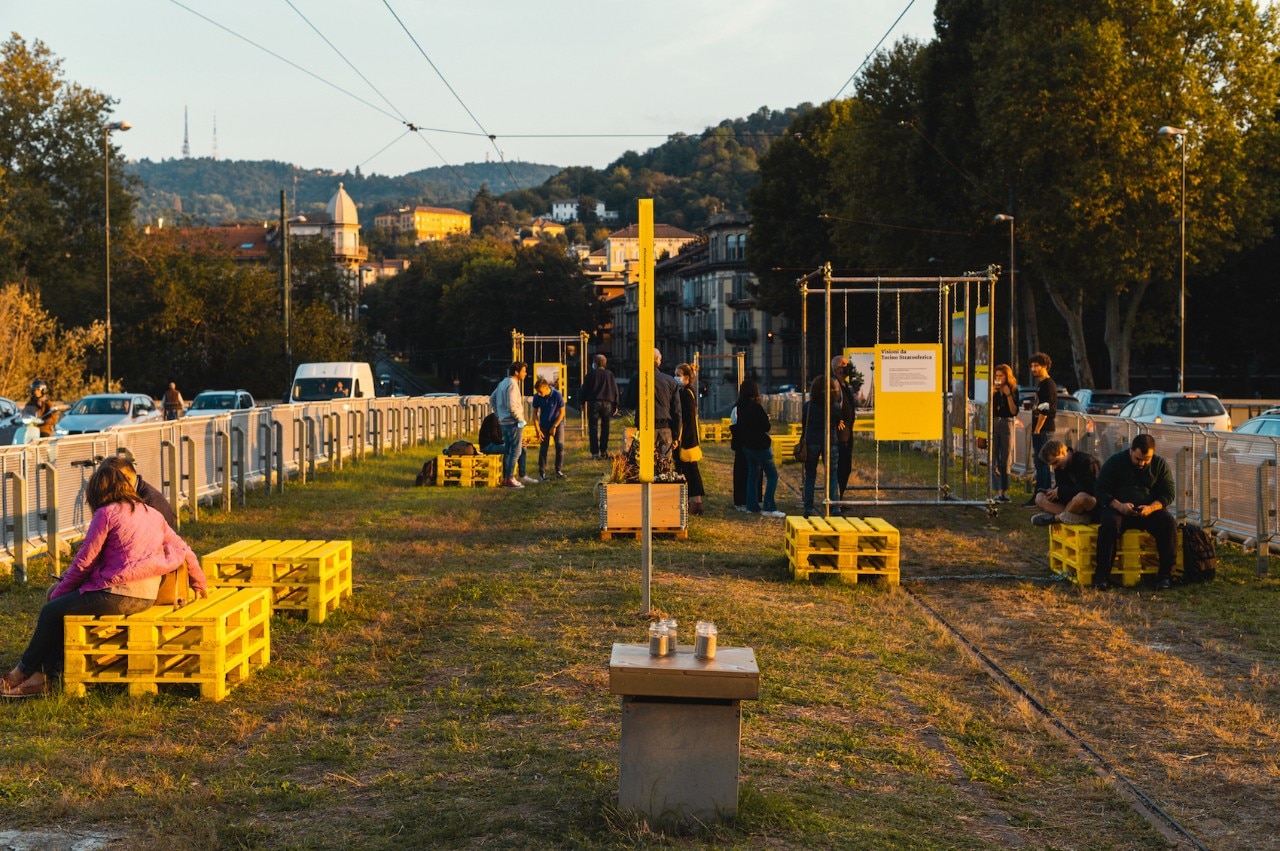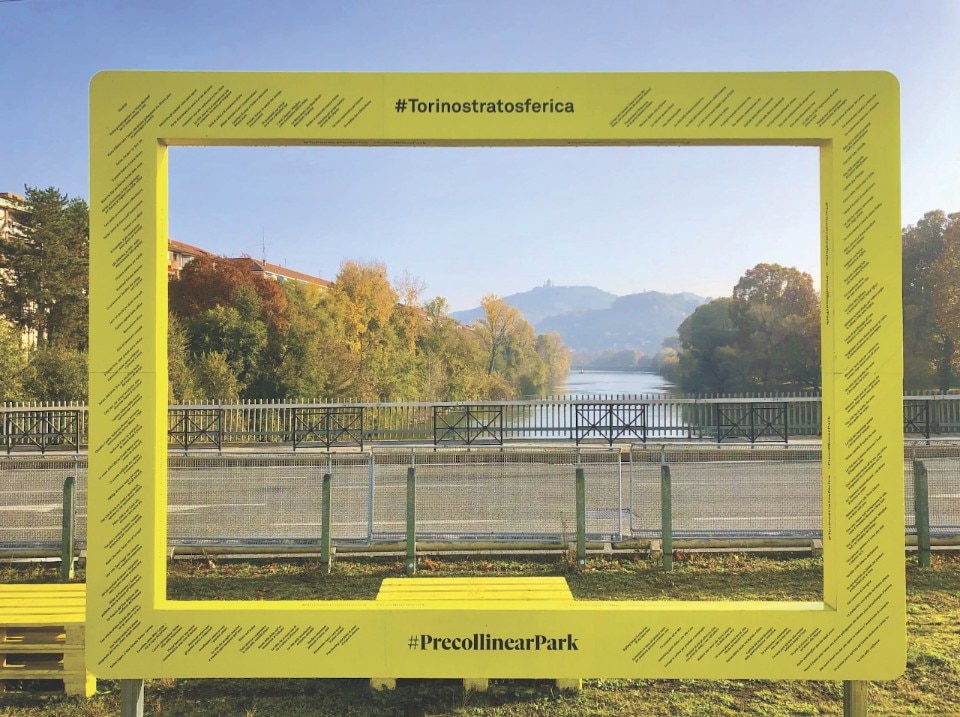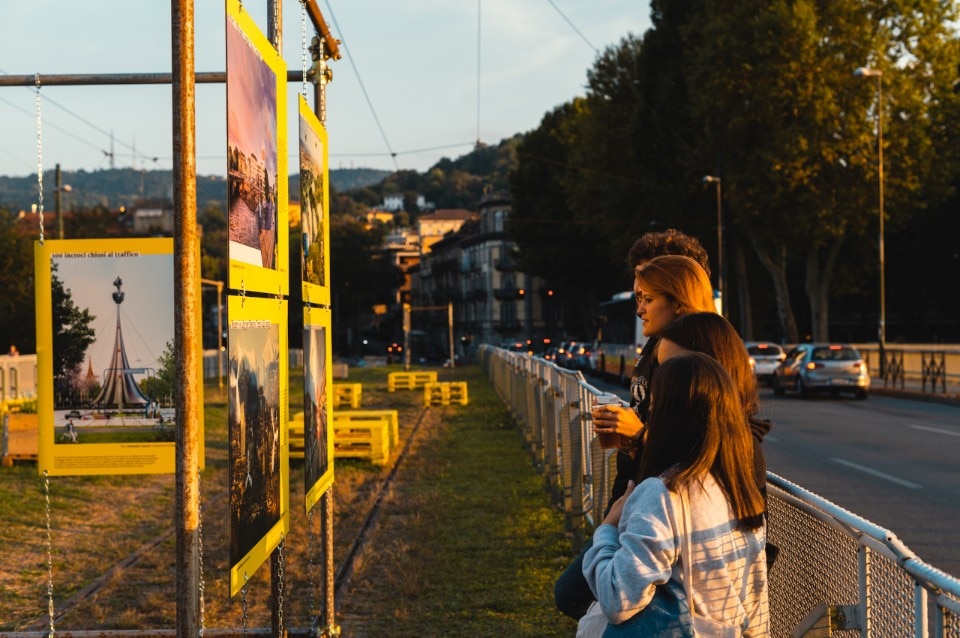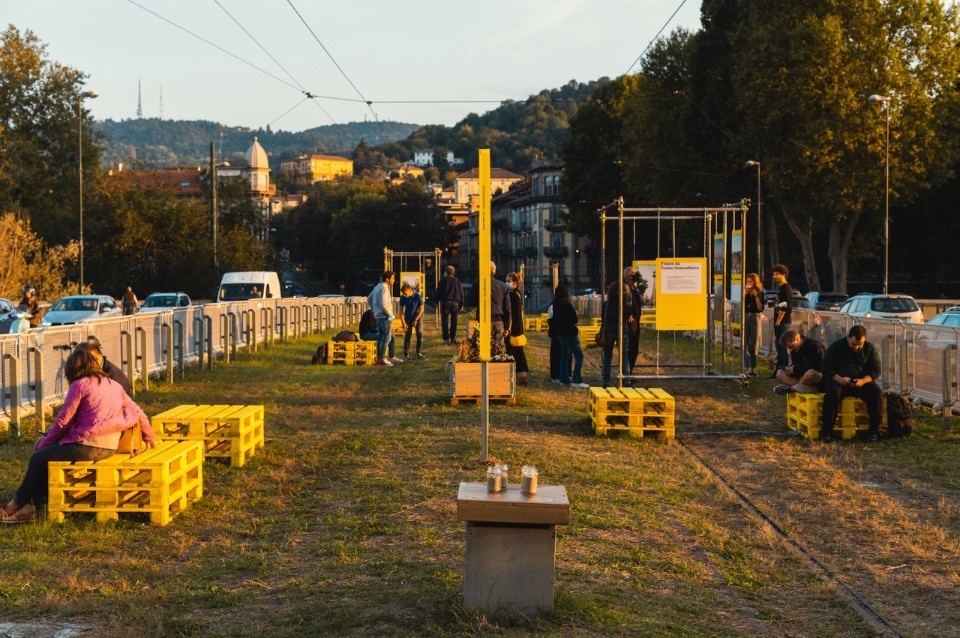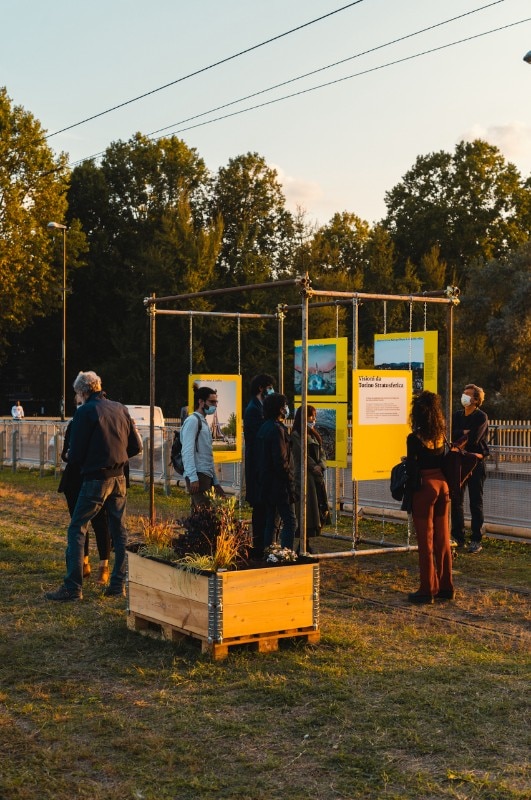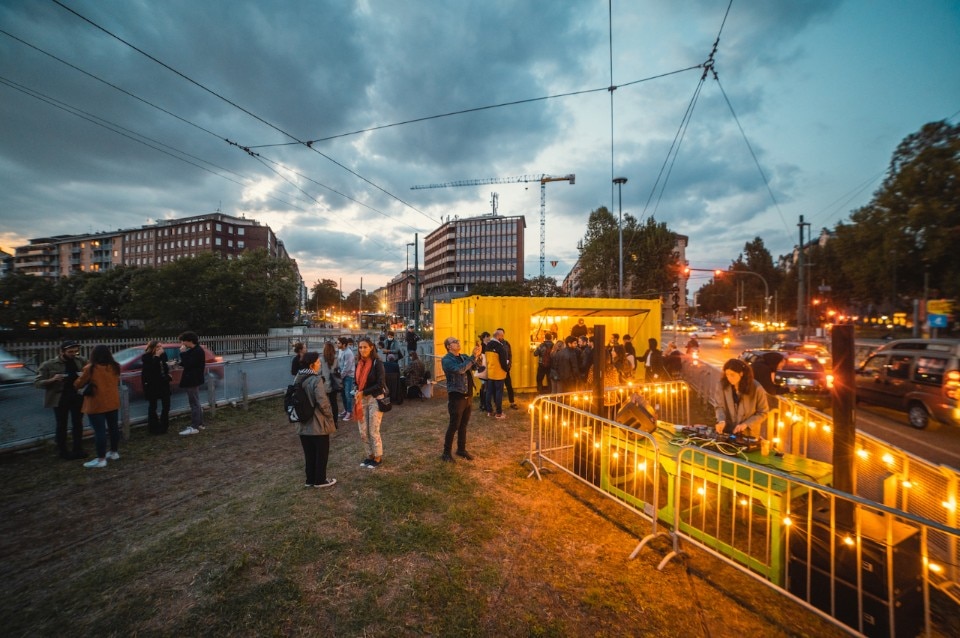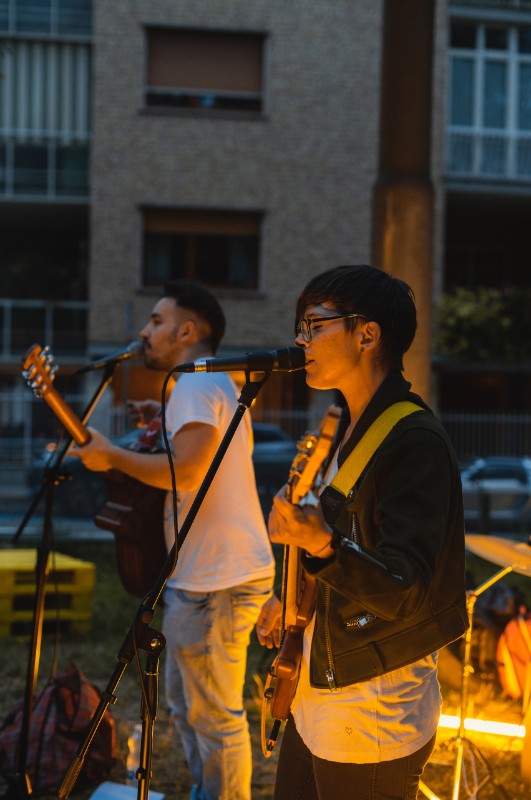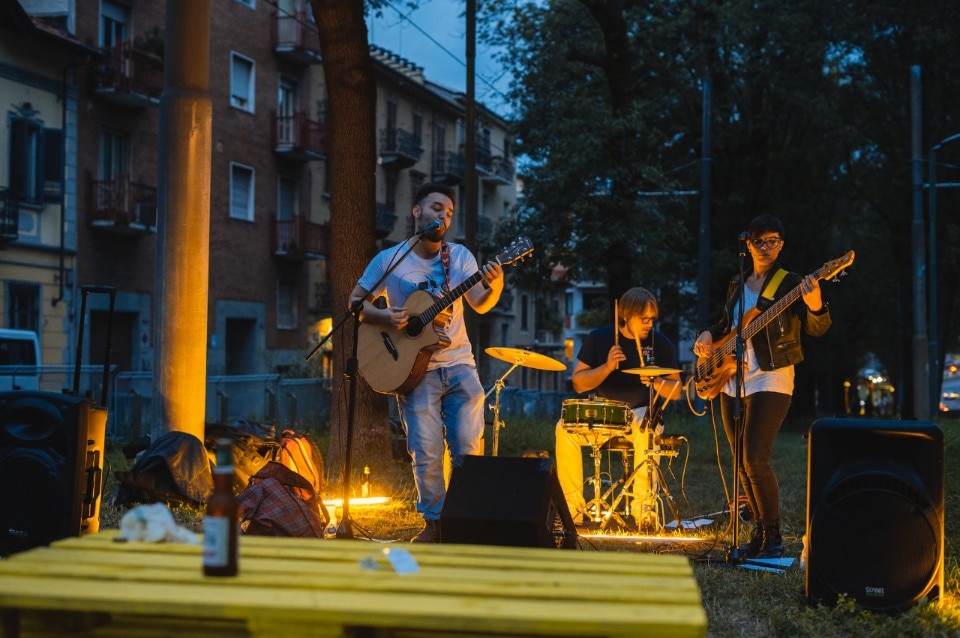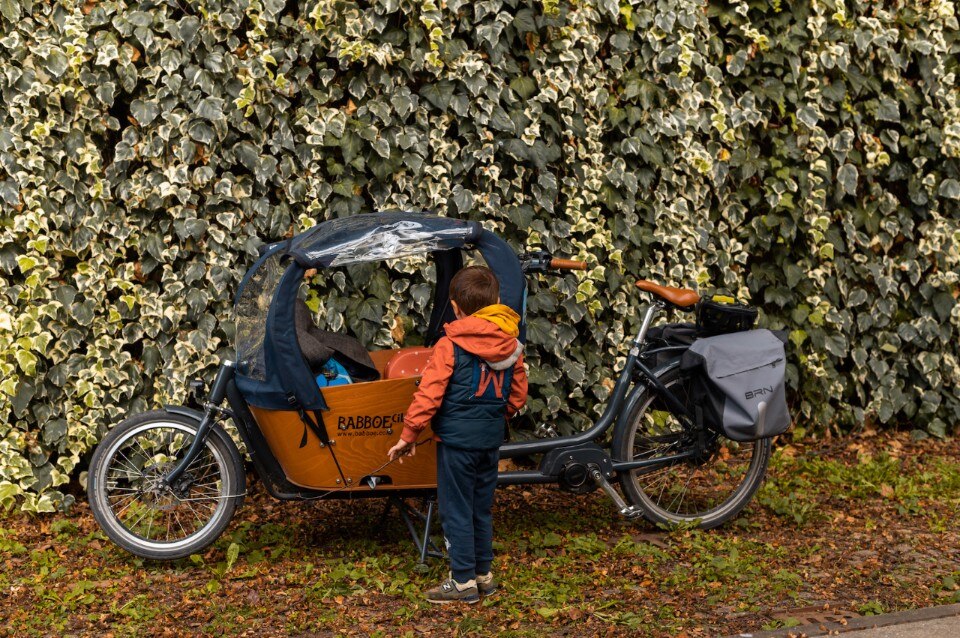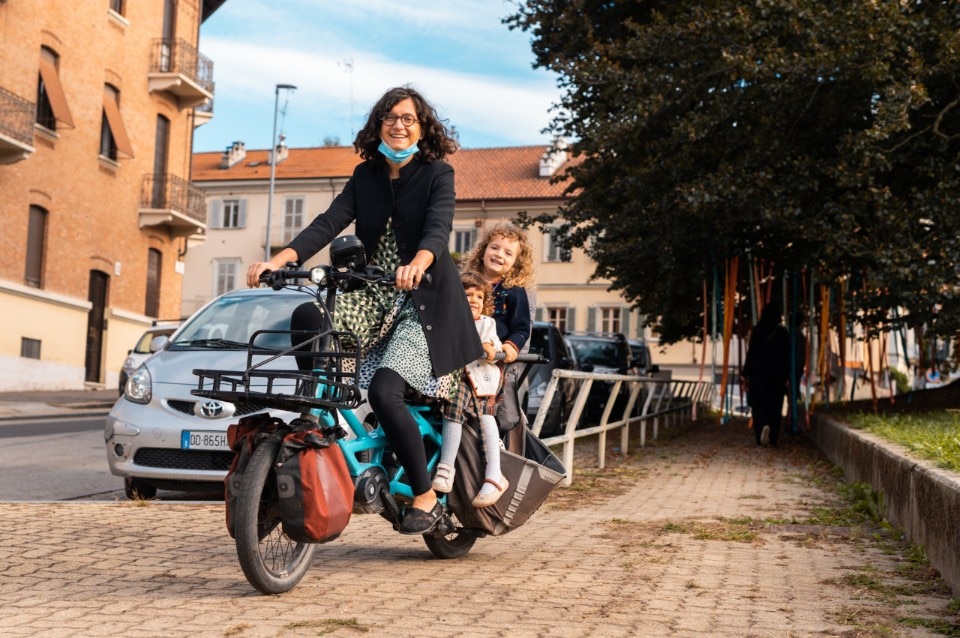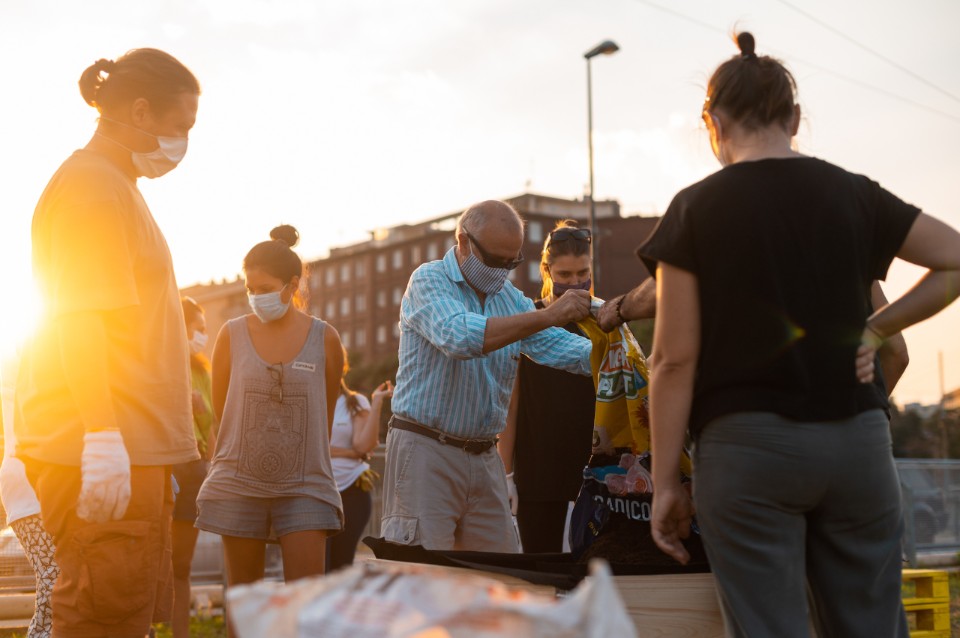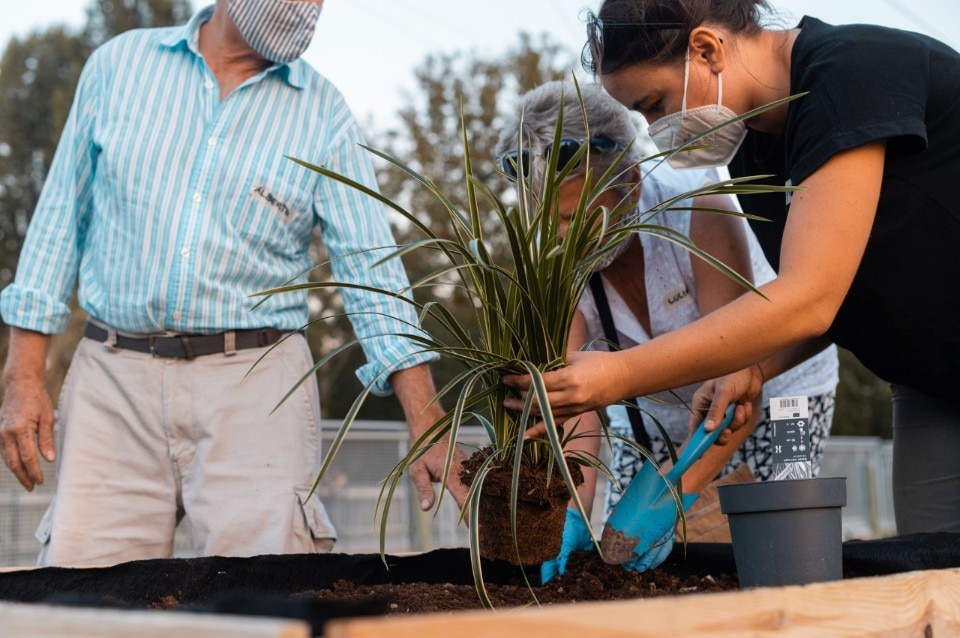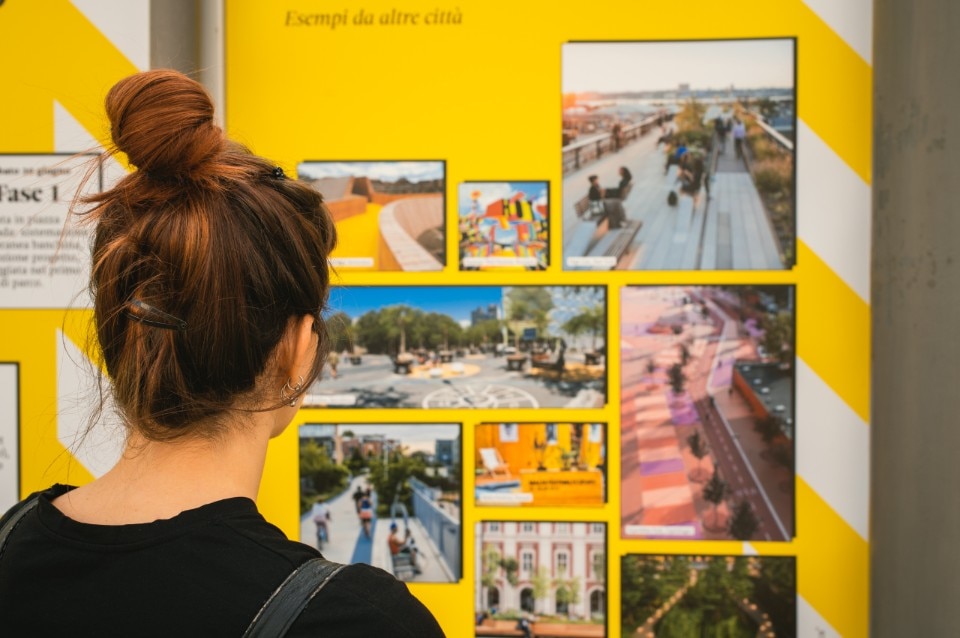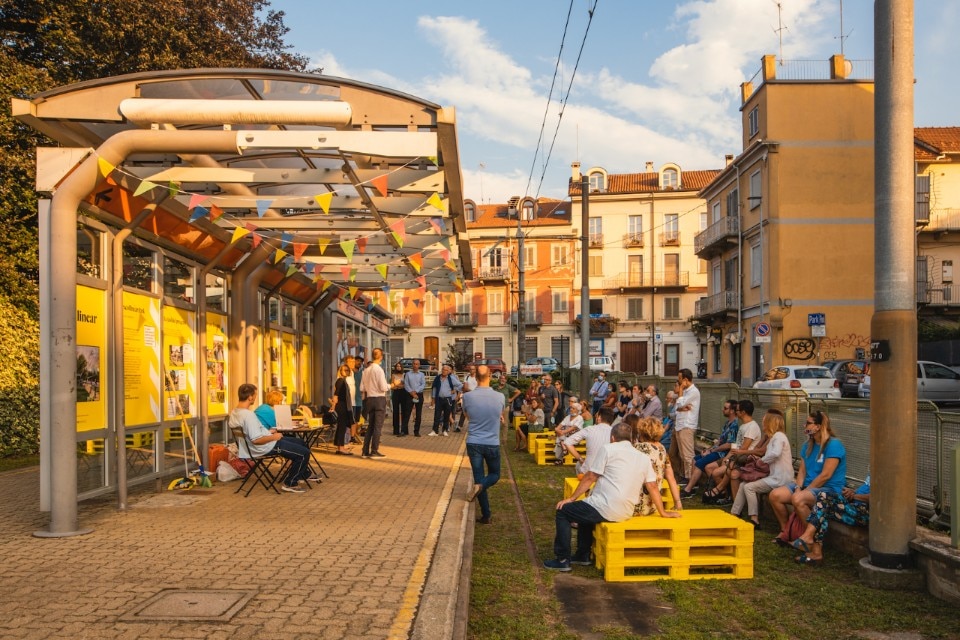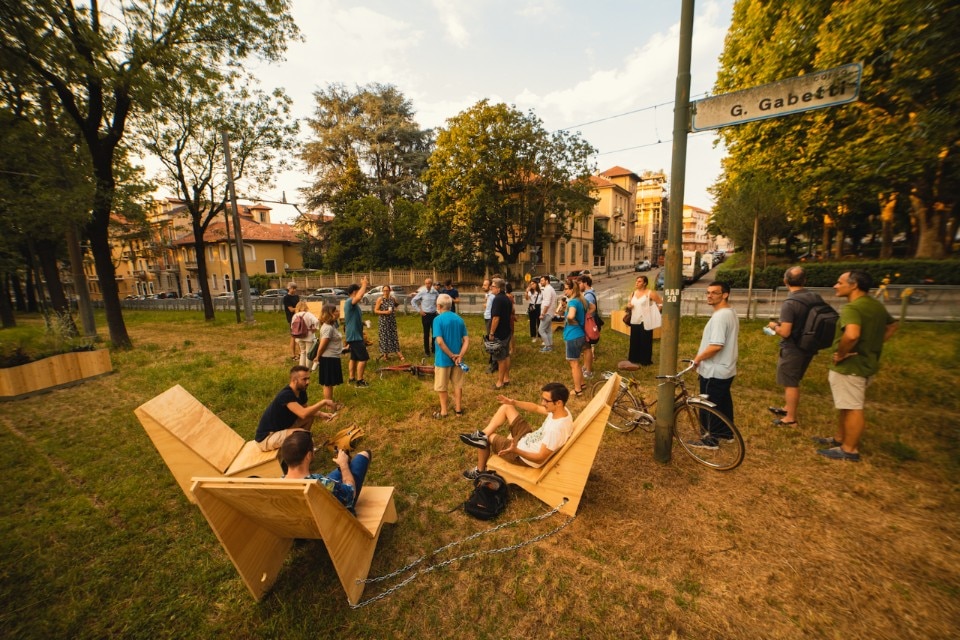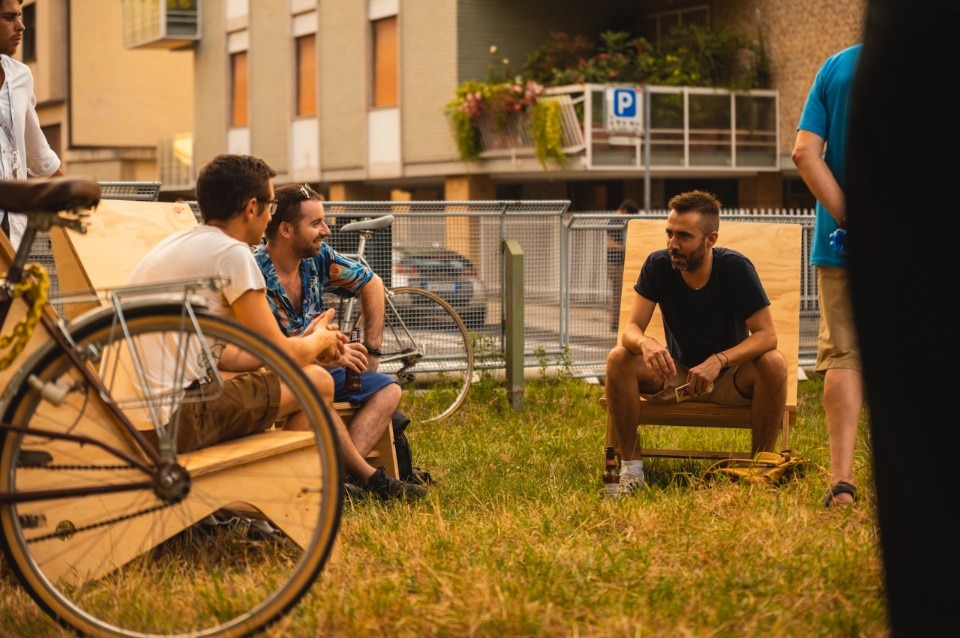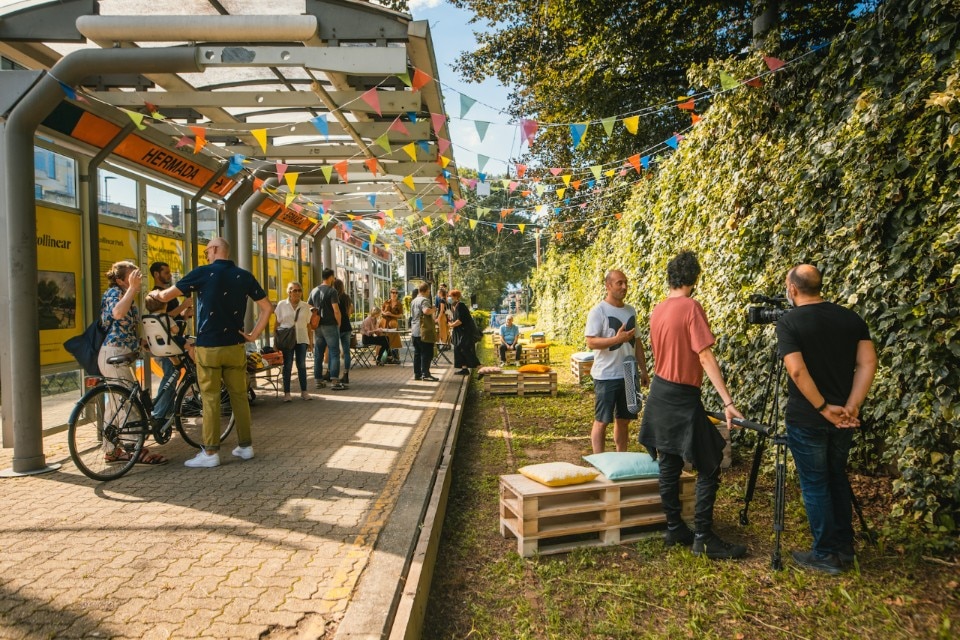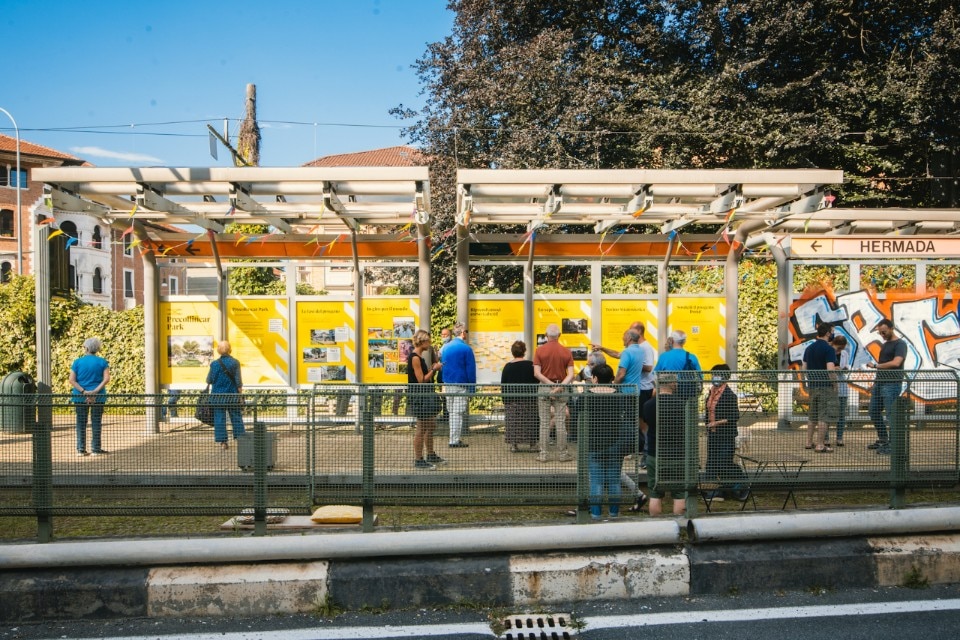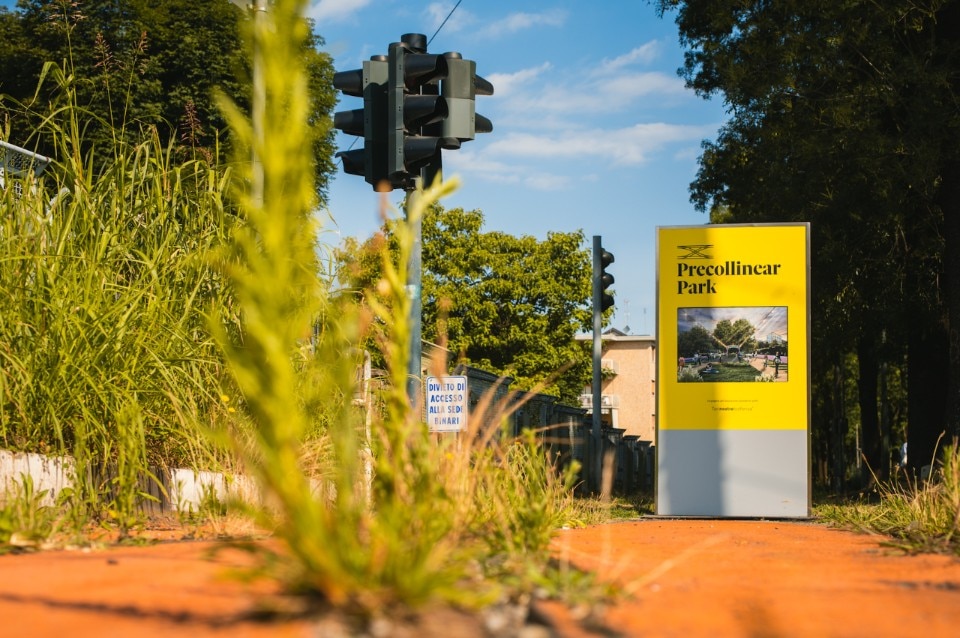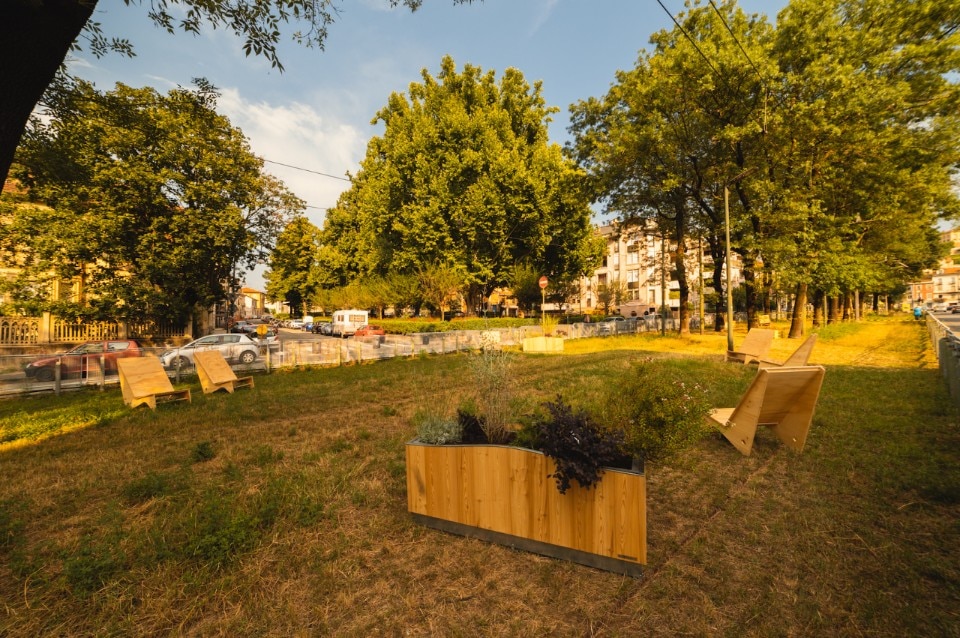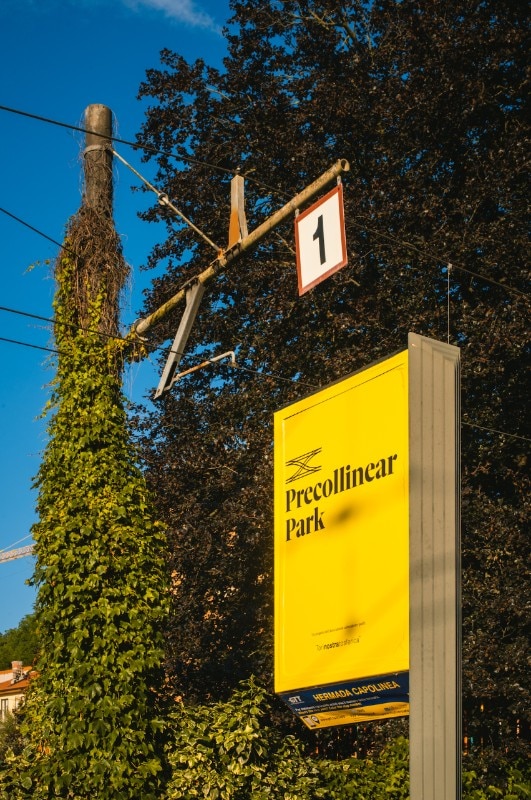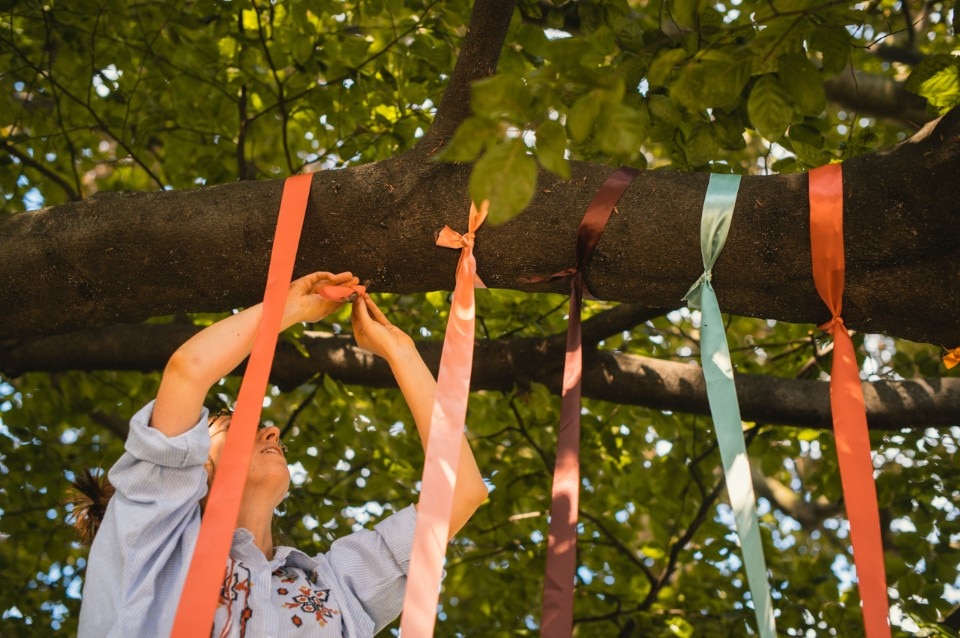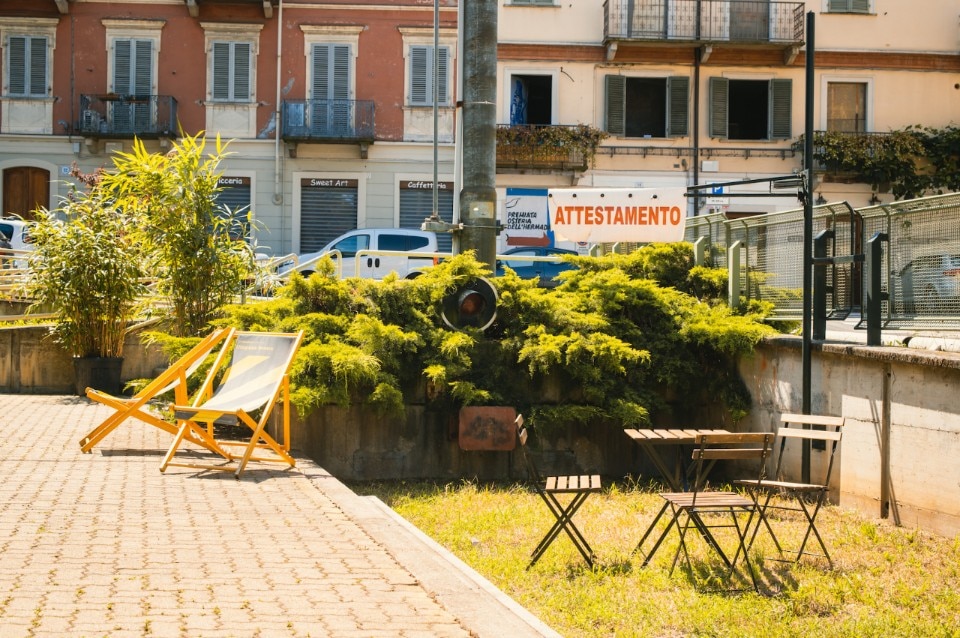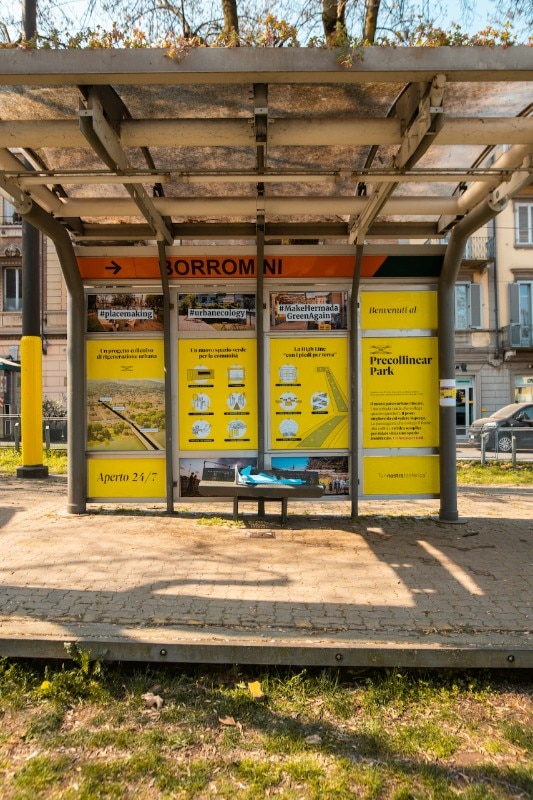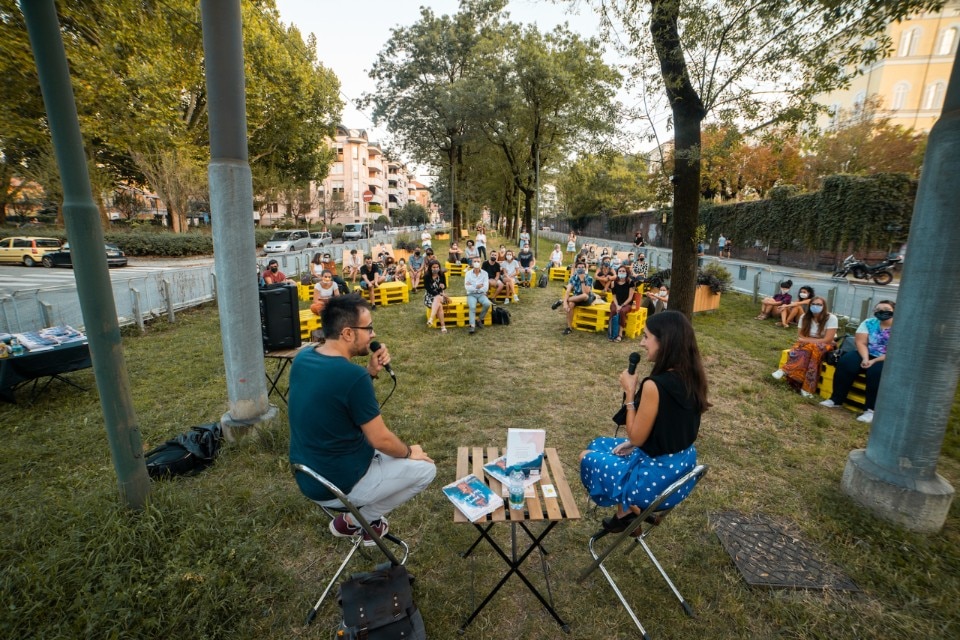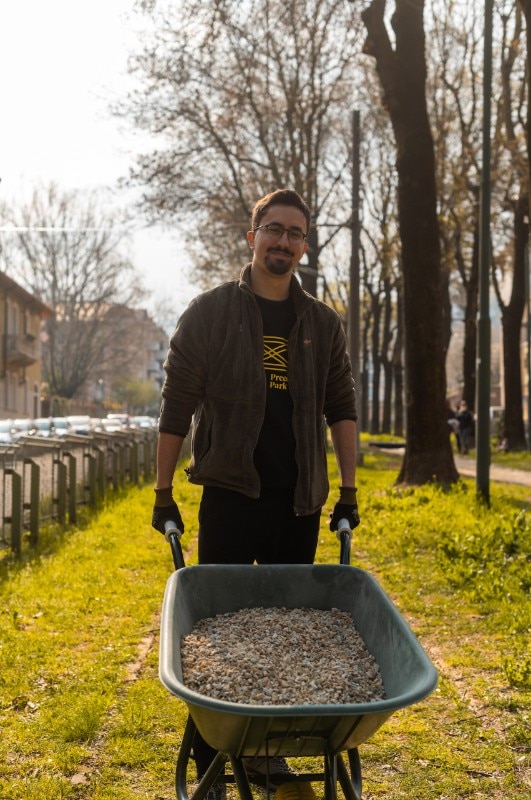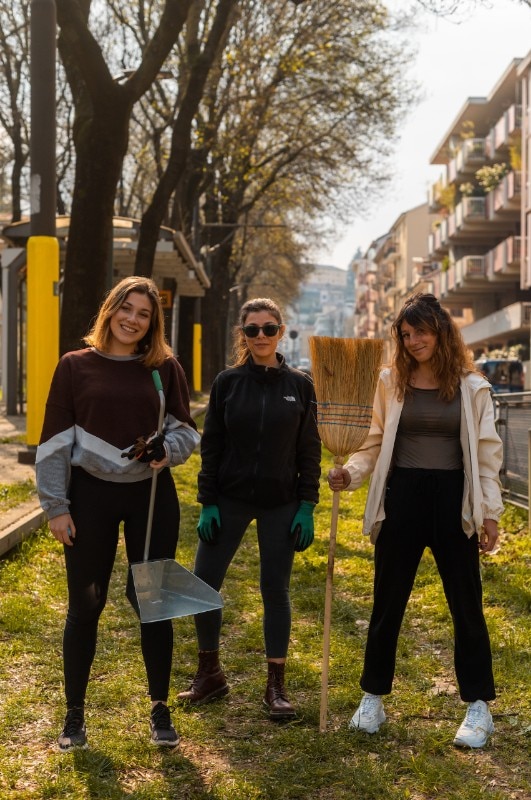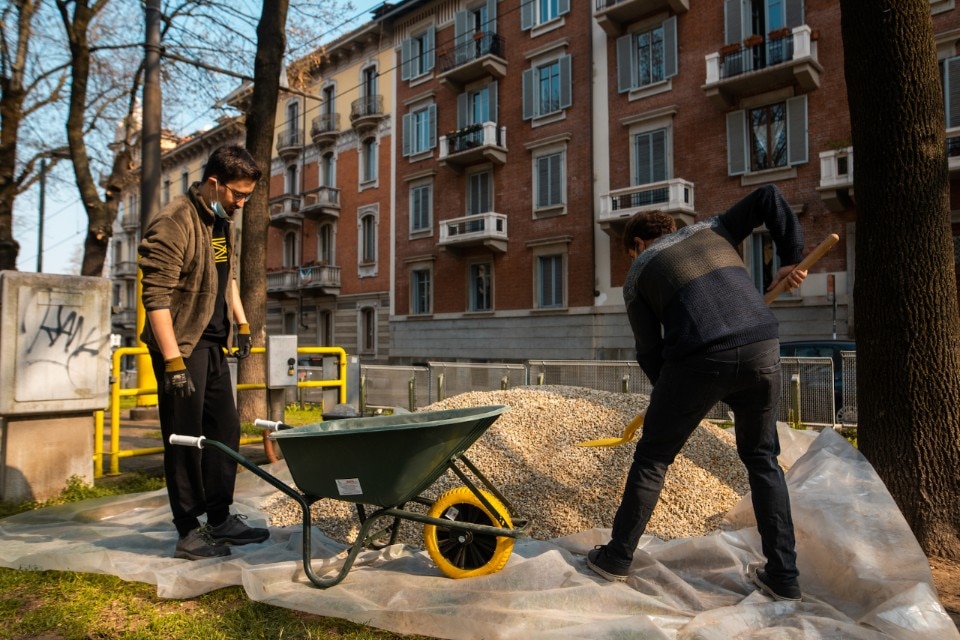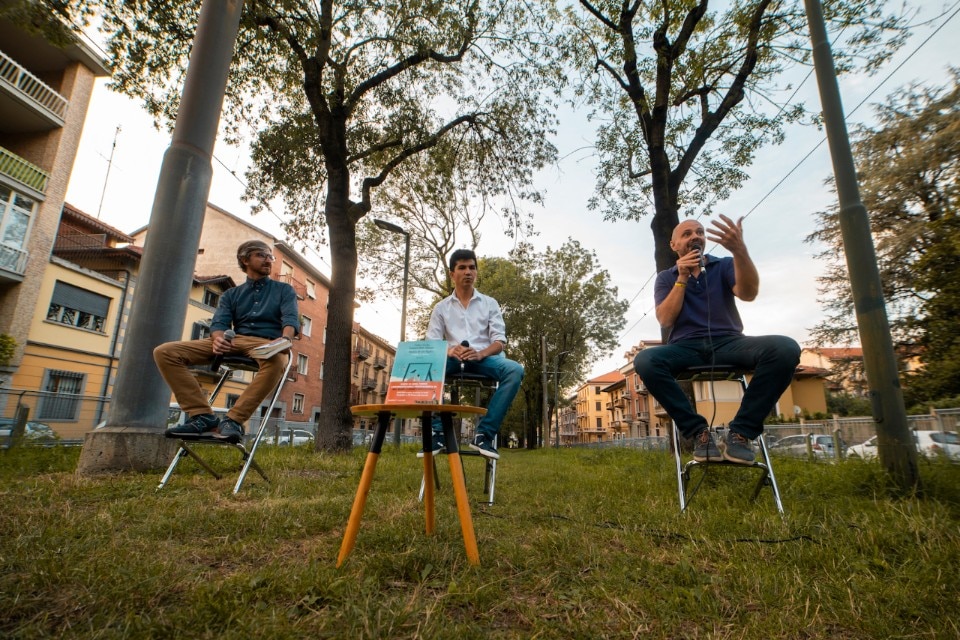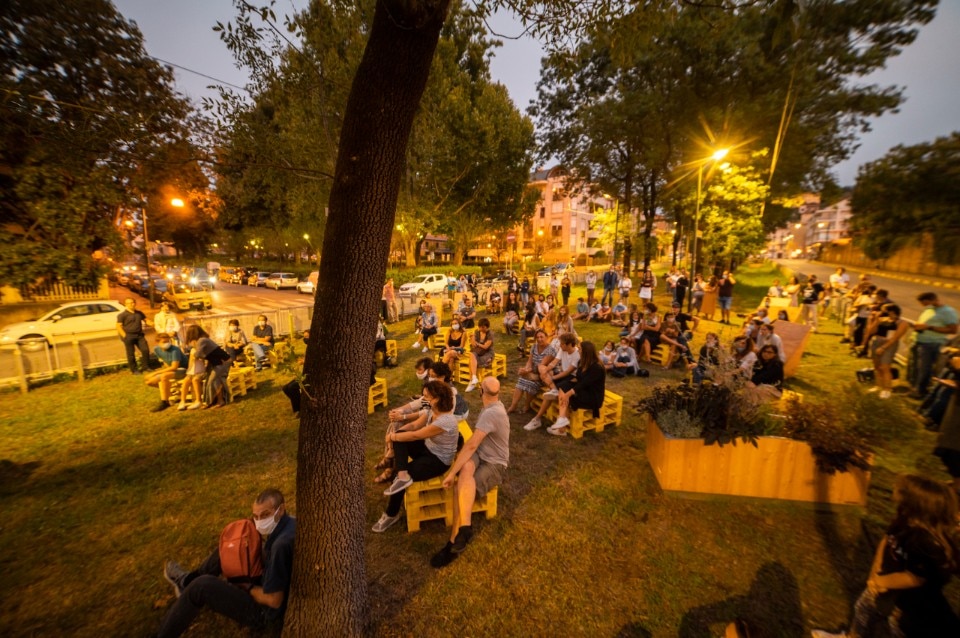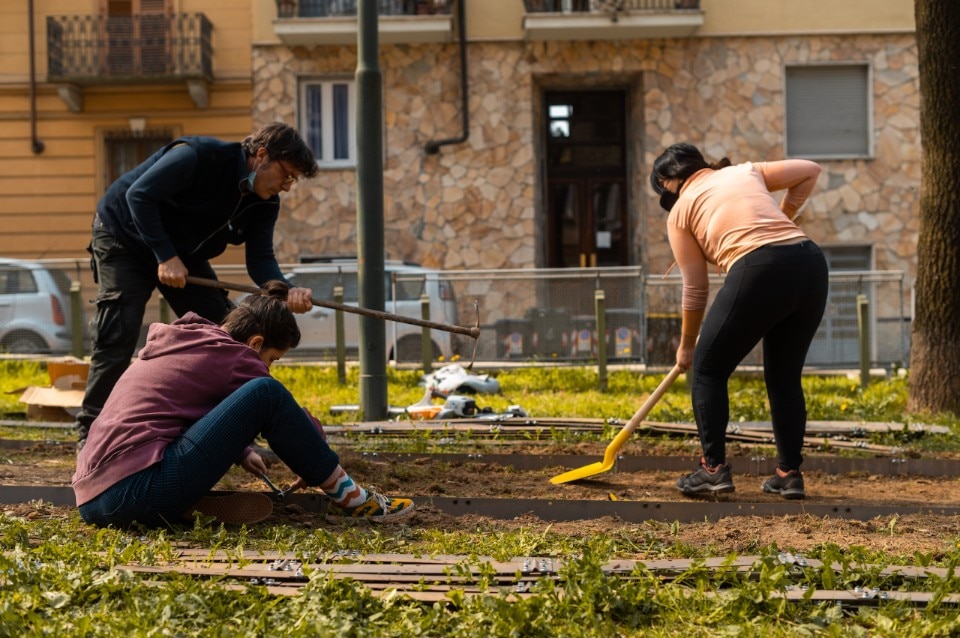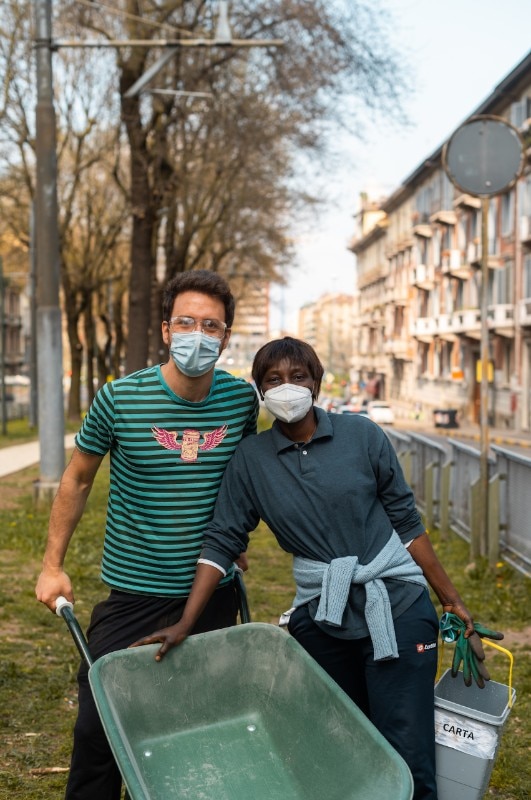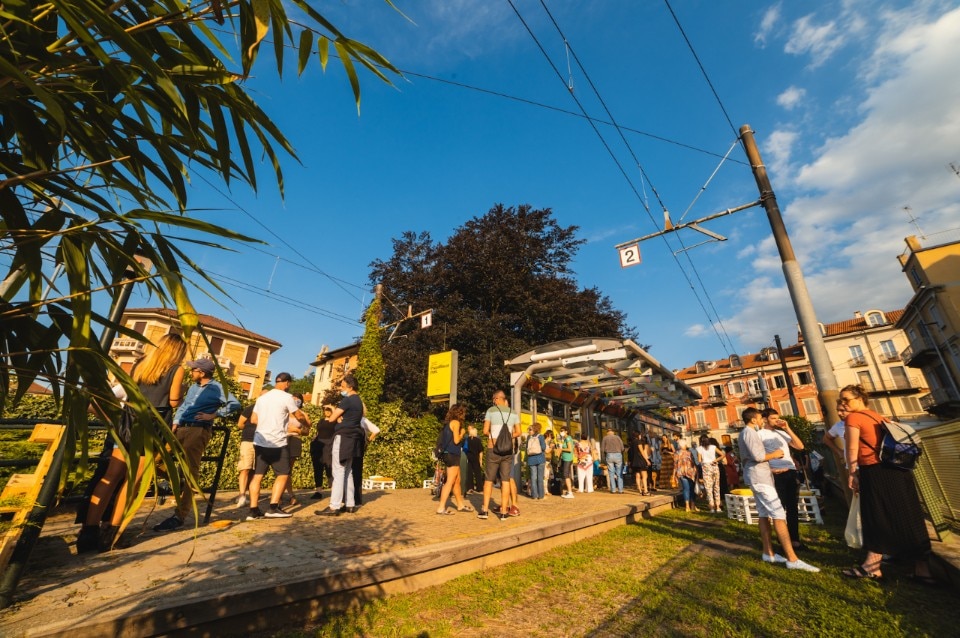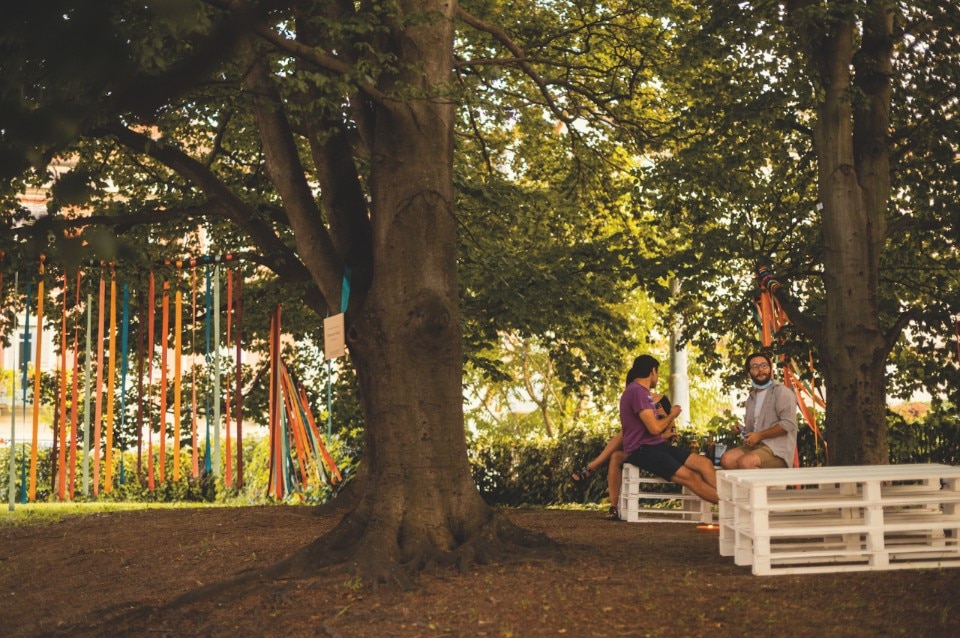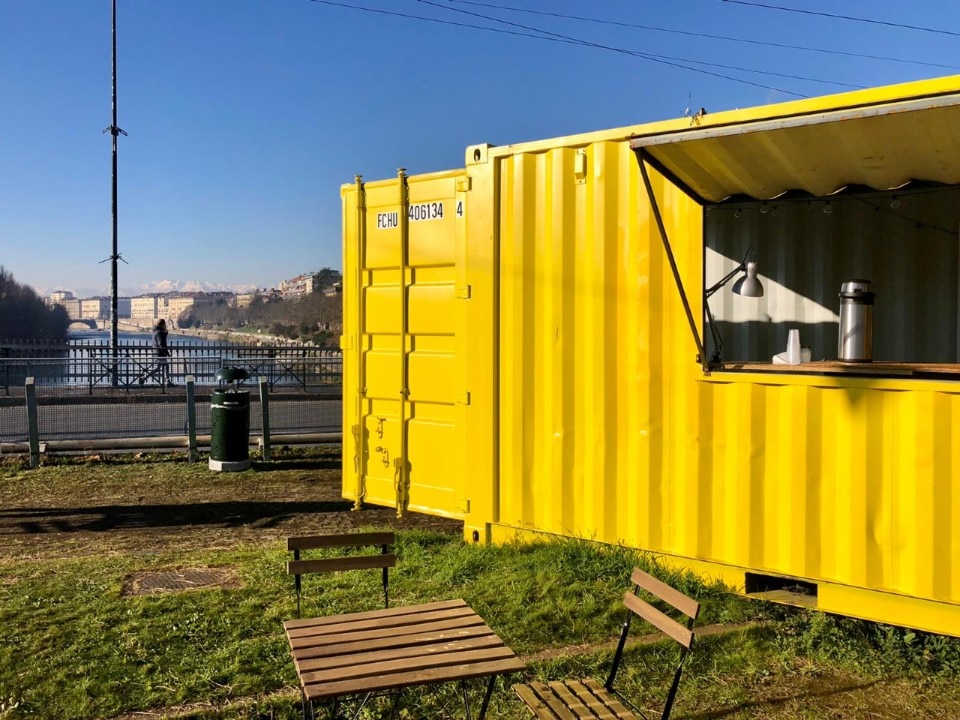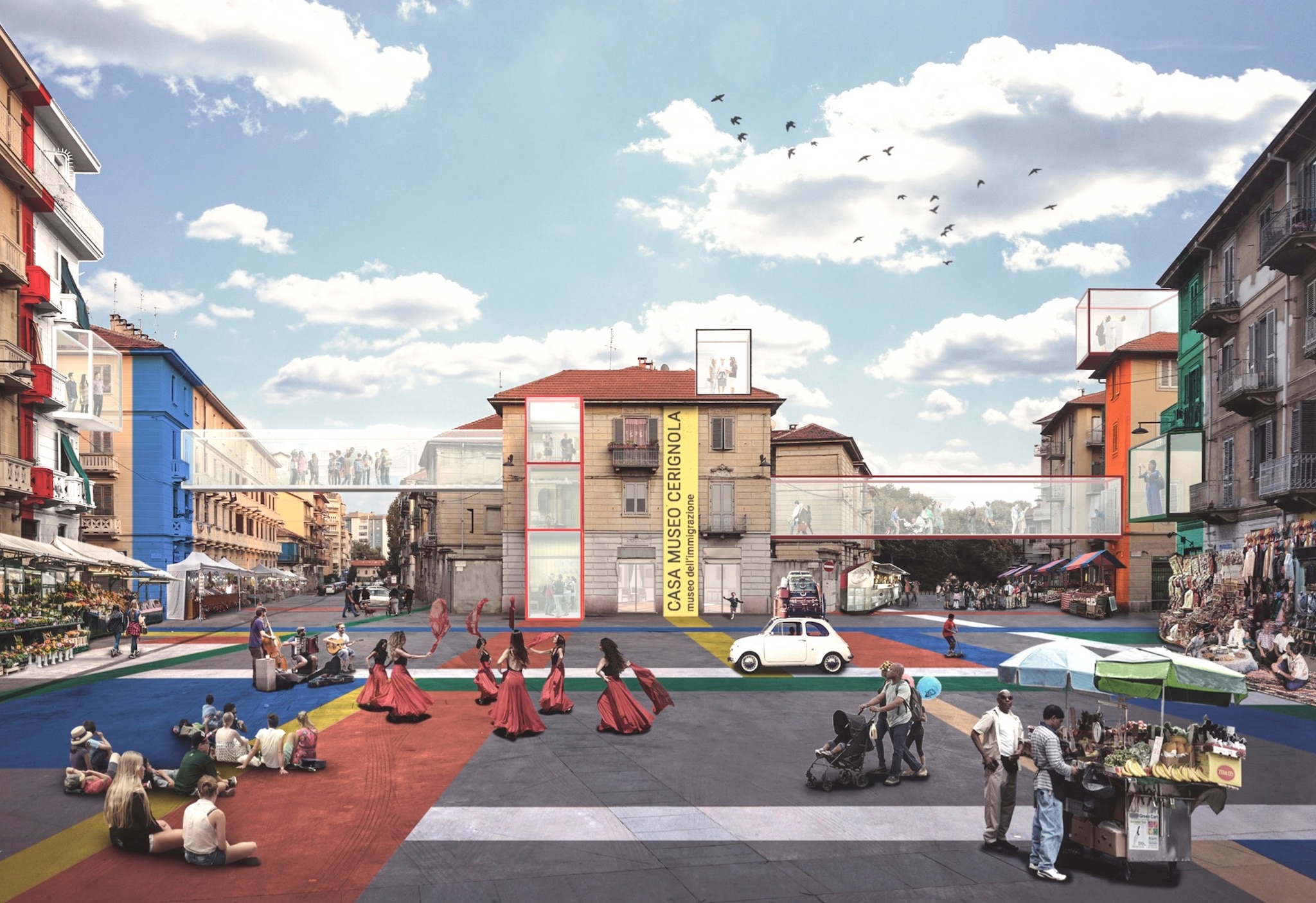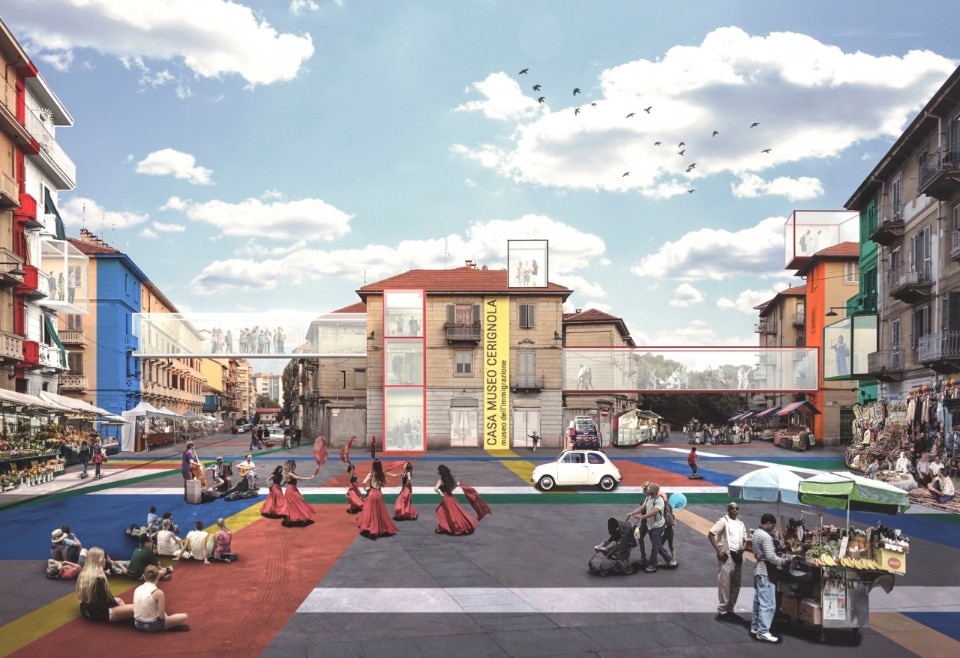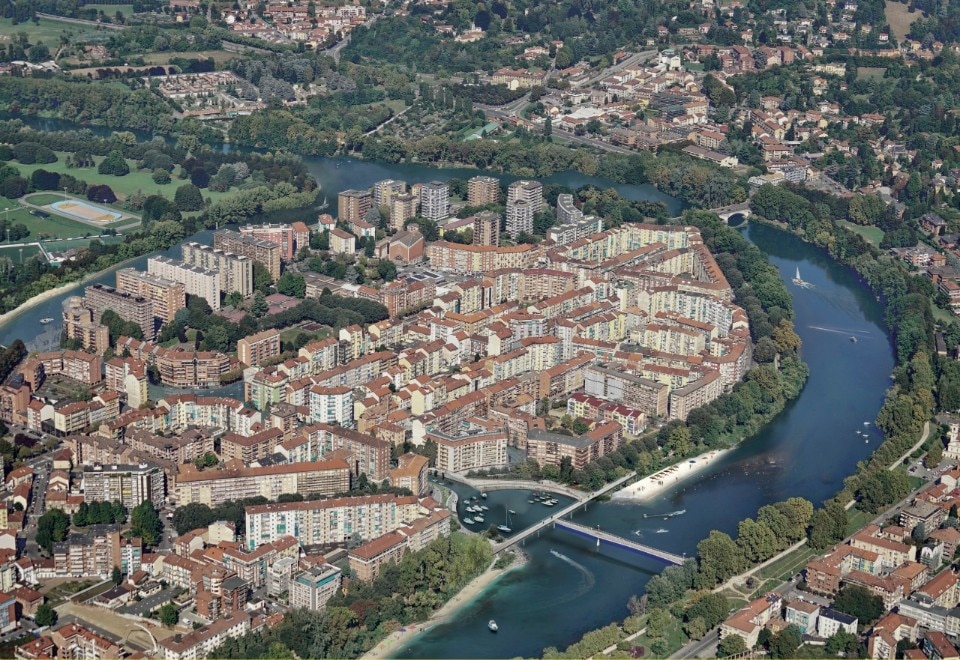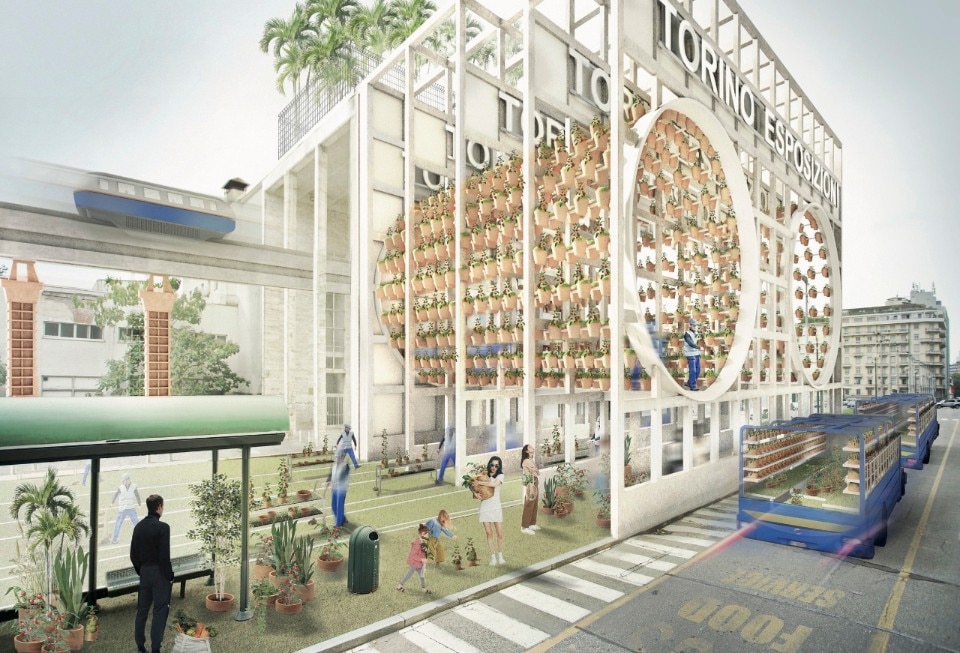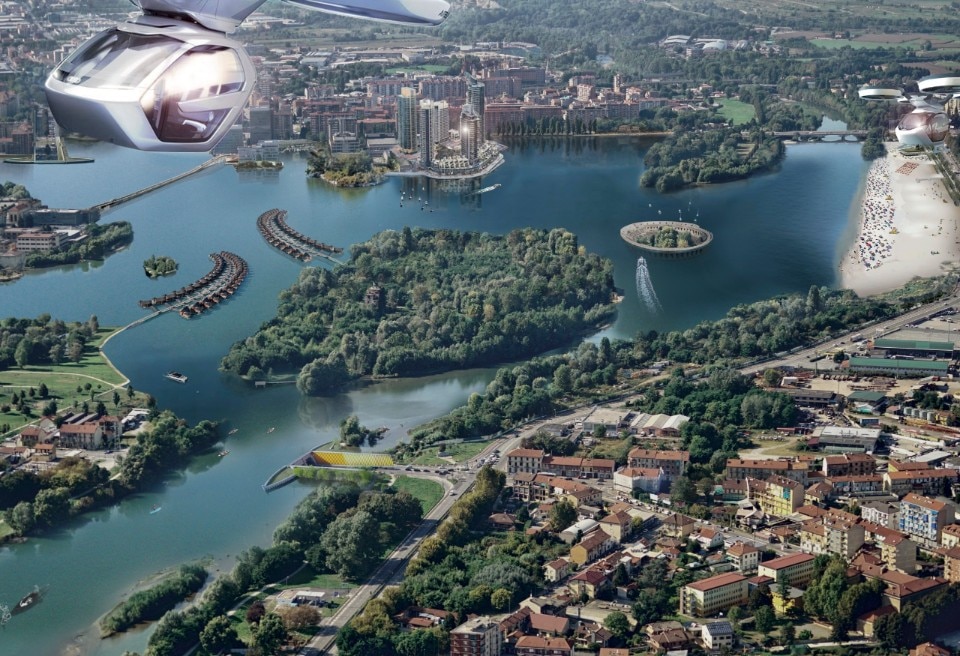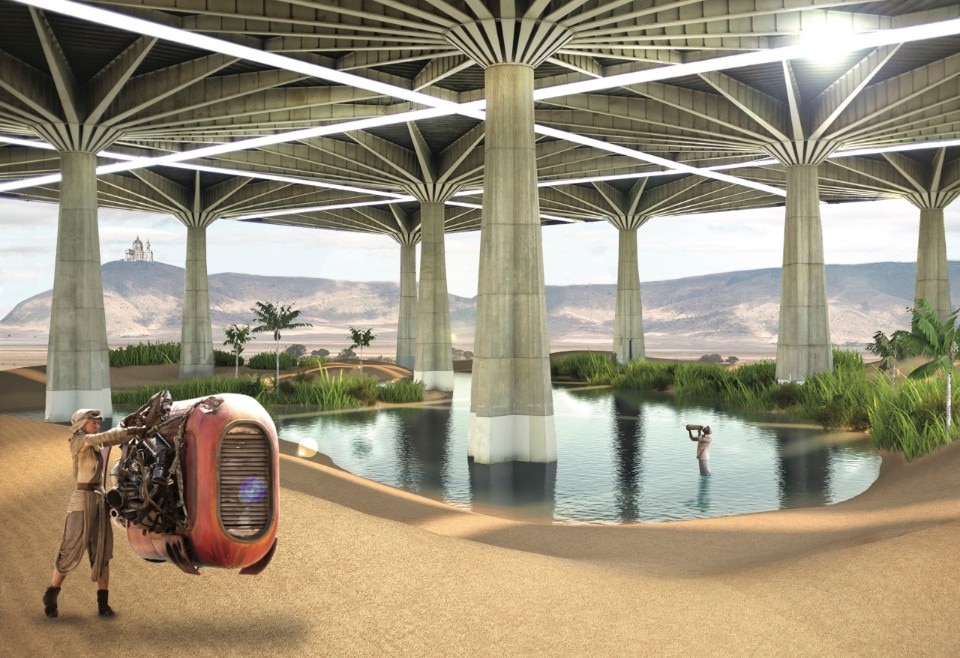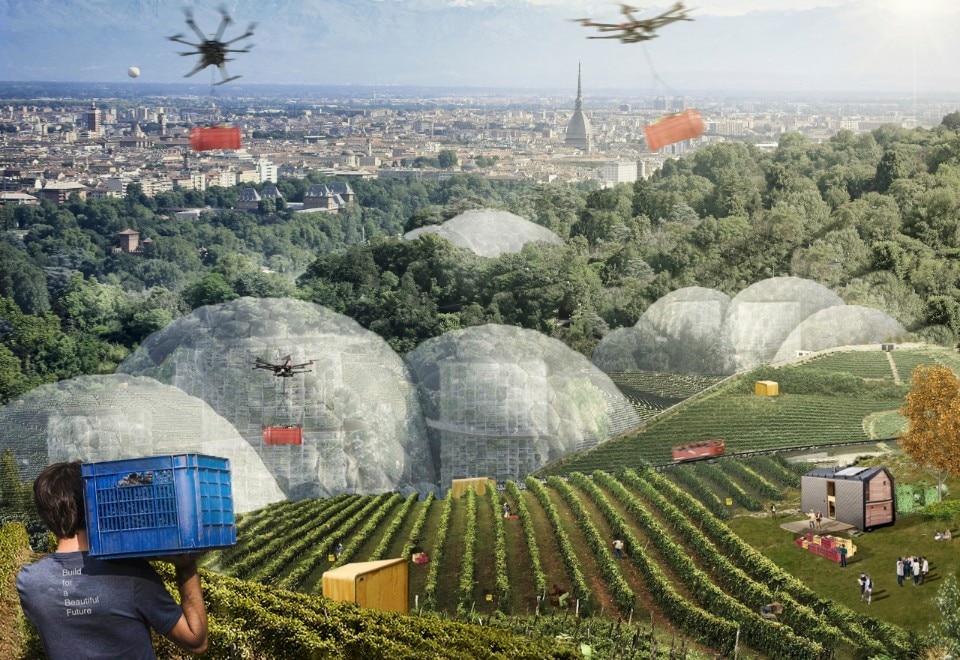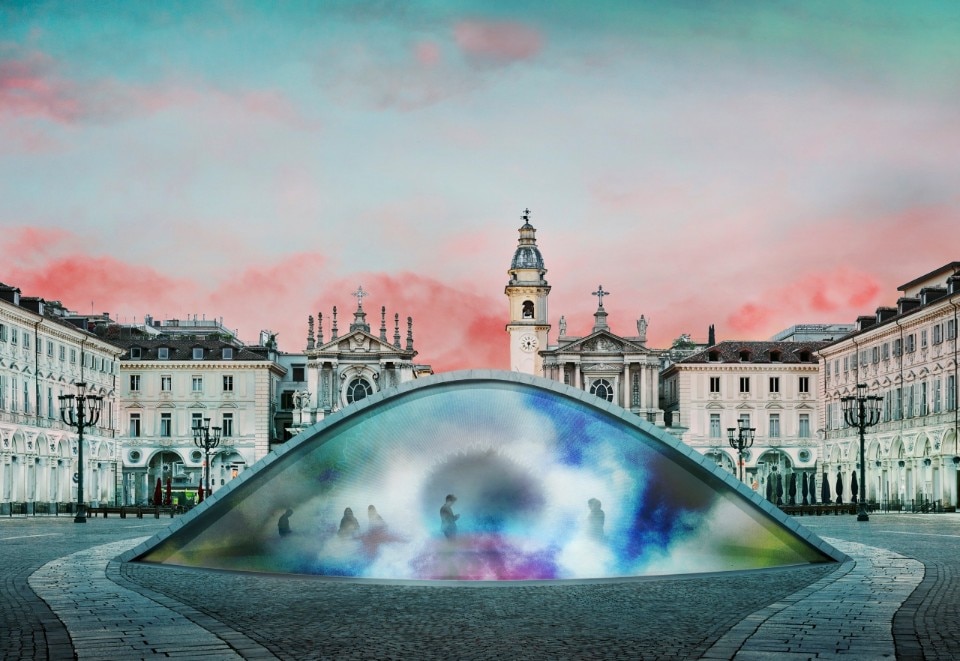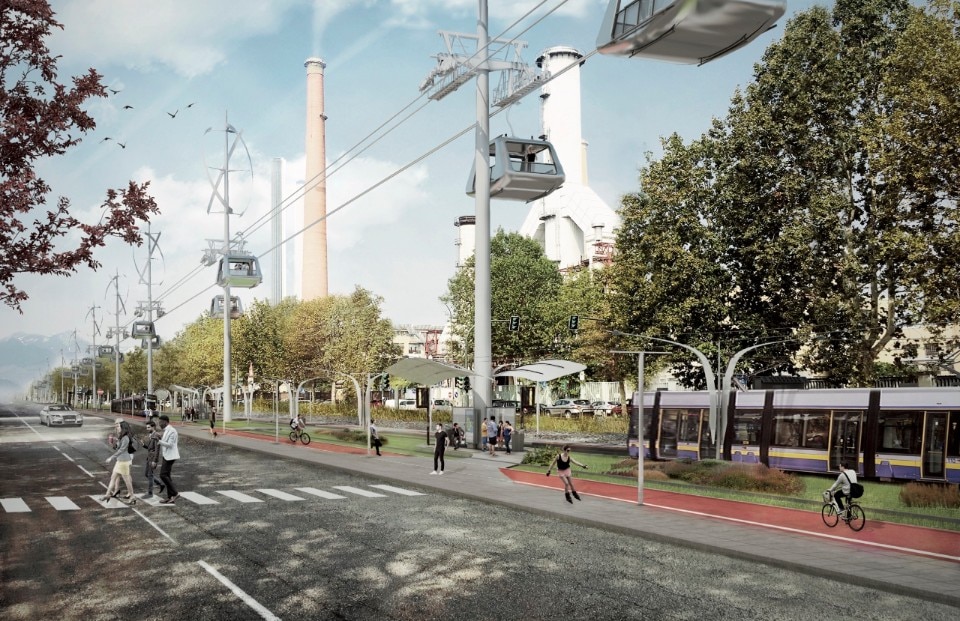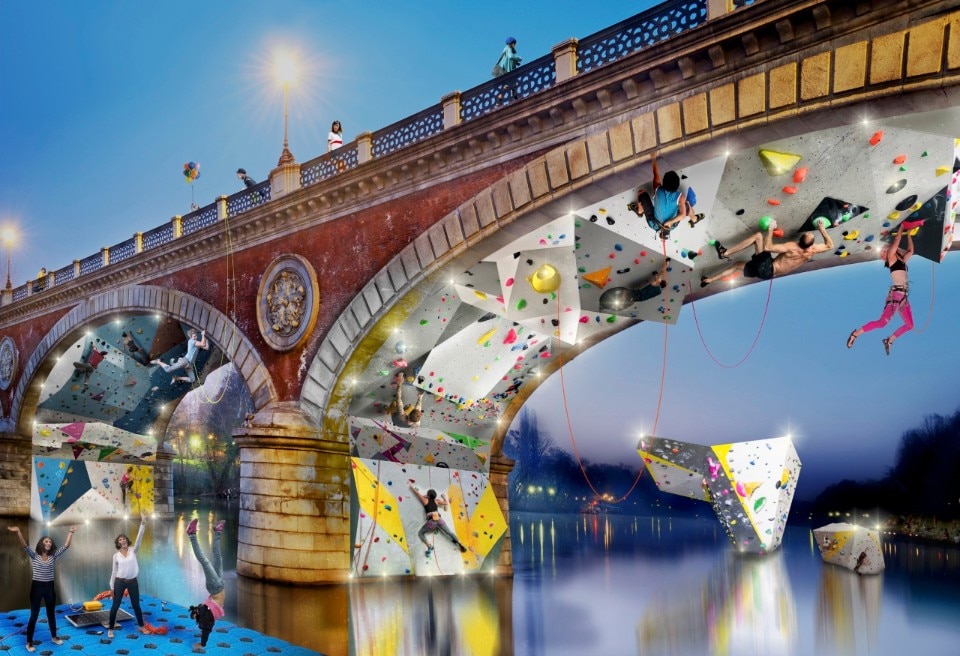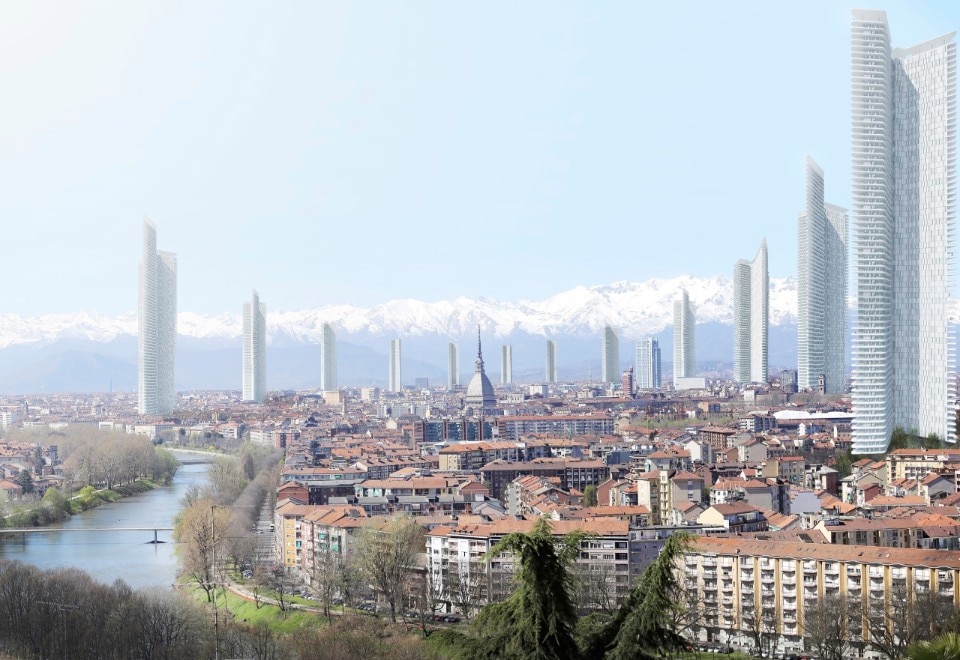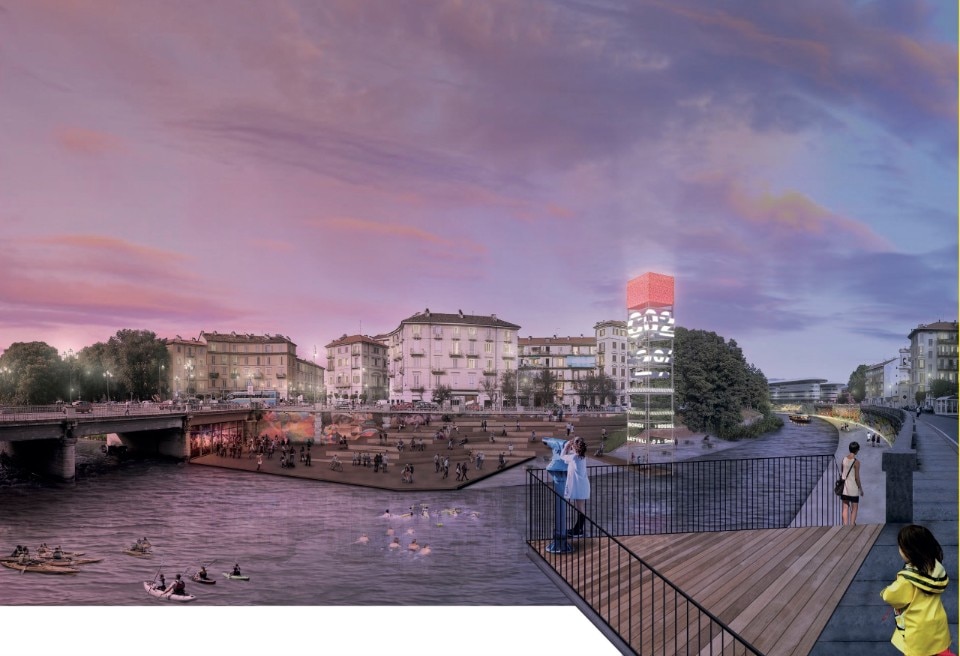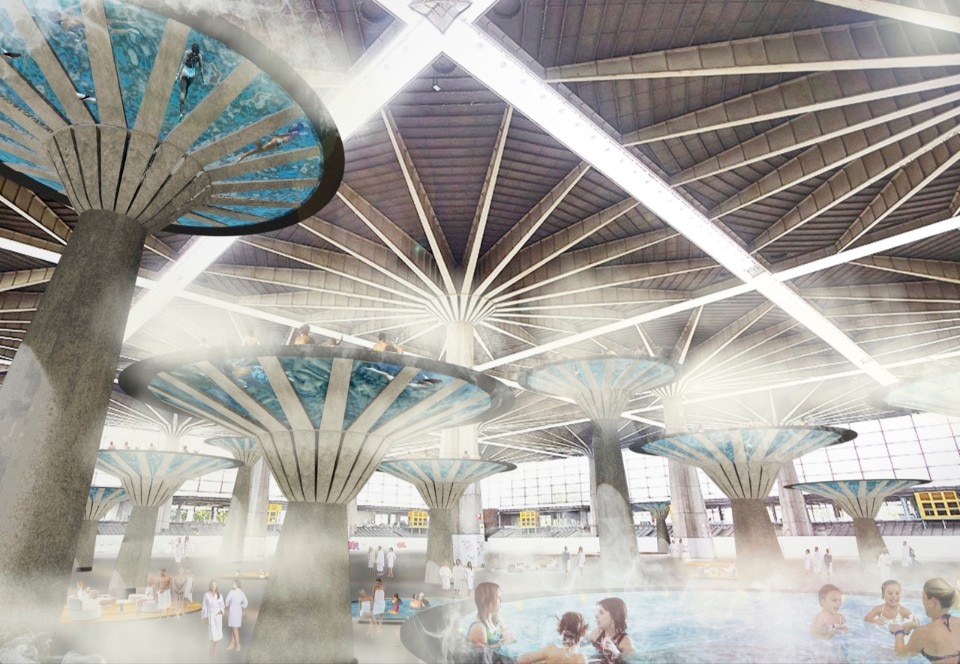The brainchild of Luca Ballarini – founder of design and communication studio Bellissimo and president of Open House Torino – Torino Stratosferica describes itself as a collective city imaging project that experiments with the creative power of urban imagination. “To date, our association has done three things,” explains Luca Ballarini, founder of Torino Stratosferica. "The first is the collective experiment of city imaging, creating images of the city as an exercise that oscillates between city branding and city imaging. At the same time, we created the “Utopian Hours” festival, an opportunity to discuss urban themes. The third and final identity started a year or so ago. We took to the street. In Turin, the avenue along the tram tracks in Corso Gabetti was transformed last summer into the Precollinear Park, a new green space for the neighbourhood born from a simple project for temporary reuse. Using the same scale of intervention, the group is now also trying to redesign Turin’s Lungo Dora.
We had the chance to talk with the project team, to talk about city making and what it means to work on city imaging, involving two other people from Turin in the conversation: designer Teo Sandigliano and Giovanni Comoglio, a contributor to Domusweb.
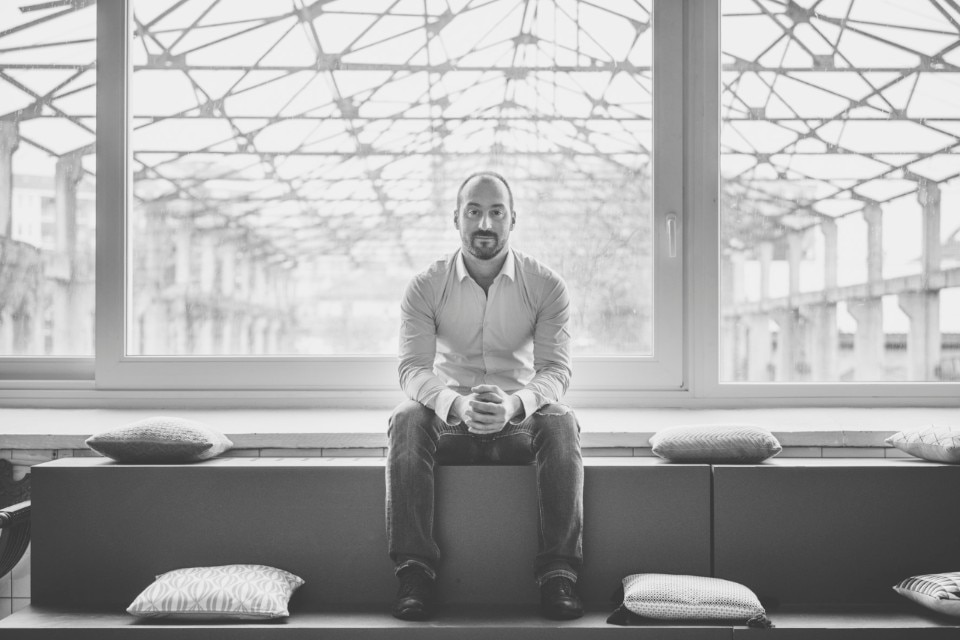
Domus: You moved from a theoretical work to a more practical one. What did you learn from this transition?
L.B.: I would say practically everything. Theory has a completely different dynamic First of all there is the interaction with other people, which was a whole new experience. There are so many ways of making the city, and of course in order to do certain things you need to be licenced. Then there are all the administrative issues. We opted for a simple, direct temporary concession, where the responsibilities are all on us, but it gives us more open possibilities in terms of feasibility and planning.
Domus: If you had to describe Turin’s uniqueness, how would you define the nature on which to base its radical rethinking?
L.B.: On the one hand, I believe cities are patterns, forms that repeat themselves. I believe in the ability to recognise specific urban patterns from city to city. All cities have urban elements that are the stratification of anthropic works, and are more or less always similar. Having said that, I also see Turin in this way, a city that in many ways is the same as many other cities, and its peculiarity is certainly that there is nothing urban about it: its geography and the fact that it is located on a plain surrounded on one side by hills, on the other by mountains, crossed by four rivers. That is already a strength in itself. I believe the Savoys’ Theatrum Statuum Sabaudiae also came from there, a vanguard of urban marketing. In 1682 Turin was in danger of being wiped off the European map, but the Savoys invented an urban story and depicted an image of the city that was 90% unreal. That’s why we say that cities are mental weapons.
The image of the city is as important as the city itself in terms of its relationship with the world
Domus: Will the experience of the Precollinear Park become a model that can be applied again in other cities?
L.B.: Certainly the way we see the city has never been Turin-centric. Our city is simply a test-bed, the territory in which we live and operate. It would be no different to do it in Milan, Naples or Antwerp, I think the attitude would be absolutely the same.
Domus: Torino Stratosferica not only in Turin?
L.B.: Our project will soon change its skin and will be called Stratosferica only. Torino Stratosferica will obviously remain as a city-specific project, but it will become one of the projects of this organization. Of course every time you work on a project you have to study the context. It is one thing to carry with you the know-how and the attention to certain specific aspects, quite another to replicate the exact same project, totally losing the site-specific character.
Teo Sandigliano: The aspect that most interests me in these projects is that city making turns into citizen making. At a time like this, this could form a new vision of the city from the citizens’ point of view.
L.B.: This is something we thought about at the beginning of the year, when we were thinking about the theme of the next festival (The 1000-minute city), and it is a consequence of the fact that we no longer imagine the city exclusively as a condensed place, a point of attraction. The dematerialisation of goods, services and the dispersion of citizens is creating a new urban dimension. We should not only be concerned with the city, but also with the citizen: what constitutes them, what can be done to be a citizen in non-urban areas, and consequently how to rethink our cities as well.
T.S.: Let’s talk about the comparison between city and countryside. All the architecture so far has created a limit between these two environments, but I see in your visions a desire to expand the boundaries of the urban. There is no longer this definition of the distant countryside, but it becomes a characterising element or a place of experimentation within the city itself.
L.B.: I recognise that the intense megalopolis has its own disruptive force and is completely contrary to nature. At the same time, the best urban experiences I have had always included primal natural elements. Rivers and green spaces are our strong point, and I am convinced that we can draw strength from nature to redesign cities as well. In this sense, I would like to mention Patrick Geddes’ Tel Aviv master plan, in which you can really connect with the natural and urban environment at the same time. When you see a city where its boulevards and spaces have been designed so that the urban and the natural interpenetrate in an almost utopian form, you really understand what urban ecology is.
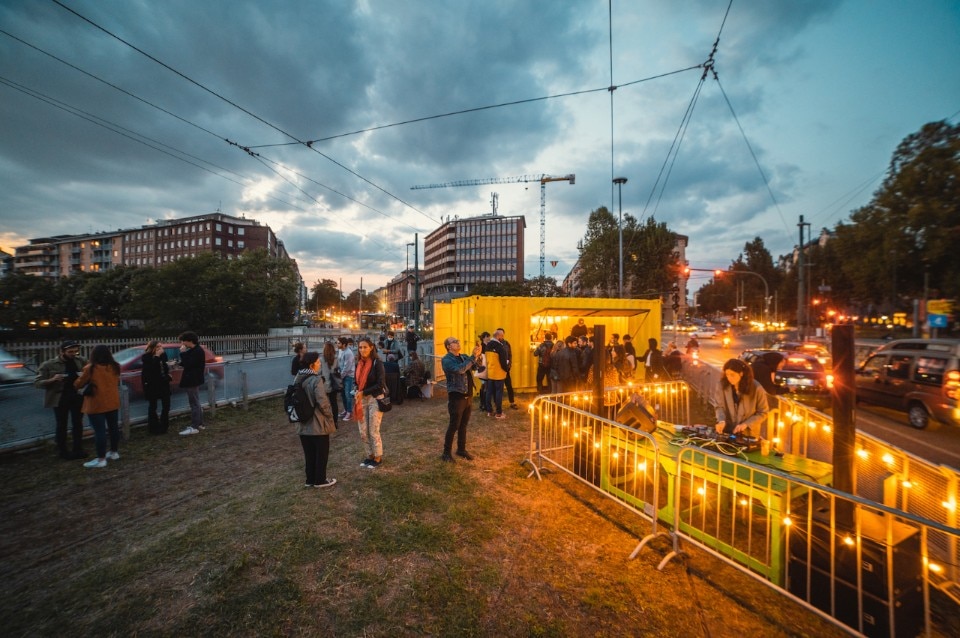
Domus: Is there a difference between an urban project designed for a local community and one designed for a wider public?
L.B.: The relationship between Torino Stratosferica and the world is dual and biunique. On the one hand we take the best of Turin to the world, showing its potential, and on the other hand we bring the most avant-garde projects to Turin. We represent this kind of urban avant-garde here, hoping that everyone will be able to come during "Utopian Hours" to hear about these international cases, which consequently also become landmarks, heritage for tourists. Of course we try to look at our city with the eyes of an outsider. This is the way I look at cities when I visit them, which is not the eye of a tourist but of a person who after a few hours starts to imagine a life there.
Giovanni Comoglio: The Precollinear Park certainly relates to a physical city, linked to the river and the hills. From a wider frame point of view, what scene does this approach envisage and what scene should it create?
L.B.: The image of the city is as important as the city itself in terms of its relationship with the world. To what extent we can contribute to creating an image of the city that helps it grow in a certain direction, freer, more beautiful, more attractive, more evolved. In this sense, all the narratives of a closed Turin are meaningless criticisms made by people who never leave the city centre. Those who, on the other hand, experiment nightlife, clubbing, the underground and multi-disciplinarity have a very different perception of the city. In this sense we have a responsibility to contribute to creating a more positive image of the city. Ours is also an appeal to the creative and cultural industry, we cannot only consume culture, we have to produce urban culture too. And urban culture is also produced thanks to experiences such as the Precollinear Park, around which the defining elements of the city, such as the river and the hill, can be immediately perceived by those who arrive. It is a very humble project that may have a temporary life, but it is a concrete example of how to create an image of the city ready to go in another direction.


